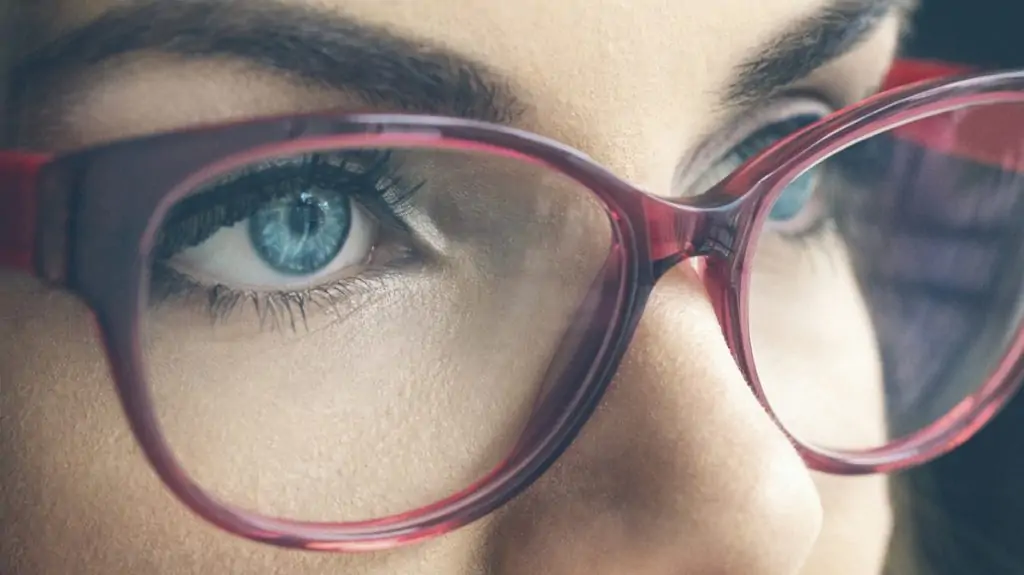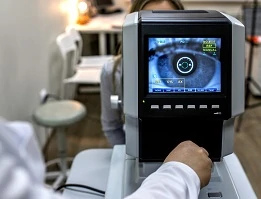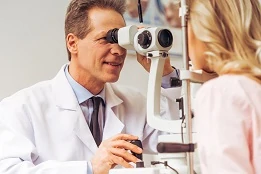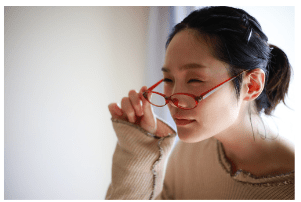What are the LASIK prescription requirements and limits?
 It’s that time again – time to get new glasses. Why do the best-looking frames and more desirable lens features (scratch resistance and UV protection are must-haves) cost so much? And, let’s be honest, having a piece of plastic stuck over your face and eyes, making indents on your nose, and covering up your features just isn’t awesome. Neither is breaking, bending, crushing, or losing your glasses. So, it’s no wonder when “that time” comes around, people who rely on glasses for vision correction start thinking about their options … like LASIK. This vision correction surgery helps so many people successfully correct their vision, people naturally assume they know everything about it. As with any surgery, it is important to have a full understanding of LASIK recovery, LASIK prescription requirements, the procedure, and more.
It’s that time again – time to get new glasses. Why do the best-looking frames and more desirable lens features (scratch resistance and UV protection are must-haves) cost so much? And, let’s be honest, having a piece of plastic stuck over your face and eyes, making indents on your nose, and covering up your features just isn’t awesome. Neither is breaking, bending, crushing, or losing your glasses. So, it’s no wonder when “that time” comes around, people who rely on glasses for vision correction start thinking about their options … like LASIK. This vision correction surgery helps so many people successfully correct their vision, people naturally assume they know everything about it. As with any surgery, it is important to have a full understanding of LASIK recovery, LASIK prescription requirements, the procedure, and more.
There have been a lot of LASIK innovations and improvements over the years.
What are the LASIK prescription requirements?
Today, LASIK works to correct a variety of common vision problems for good candidates. Myopia (nearsightedness), hyperopia (farsightedness), astigmatism (irregular cornea) and presbyopia (“aging eyes”) can be treated with LASIK. However, many eyeglass wearers think they are not good candidates for LASIK because they have high eyeglass prescriptions.
The best way to find out if you’re a candidate for LASIK is to have a thorough evaluation by a board-certified ophthalmologist. Whether your eyeglass prescription qualifies for LASIK is just one of several factors your ophthalmologist considers before recommending LASIK. These factors include:
What are the LASIK prescription limits?
Find out if your prescription falls within the LASIK prescription limits treatable range. Your prescription (or “refractive error”) is measured in “diopters,” a metric unit used to indicate the strength of the eye or lens. Advanced laser vision correction profiles have the potential to treat up to:
- +6.00 diopters of hyperopia,
- Astigmatism up to 6 diopters
- Nearsightedness up to -12.00 diopters
Depending on the laser chosen for the treatment.
Do I Qualify for LASIK?
Here are 4 guidelines that your eye surgeon would use to assess if you qualify for LASIK surgery.
- Is your prescription stable and your eyes healthy?
- What is the quality of your vision?
- Shape and thickness of your corneas
- Size of your pupils
1. If your prescription is stable and your eyes healthy
To have LASIK eye surgery, you must have a stable prescription. This means your eyeglass prescription has not changed for at least two consecutive years. A question commonly asked is how old do you have to be to get LASIK? LASIK is FDA-approved for people aged 18 and older. However, young adults are encouraged to postpone LASIK until their mid-20s. This age of “ocular maturity” typically means prescriptions are more stable. It is important for eyes to be healthy, free of diseases, injuries, and infections.
2. The quality of your vision
During the initial consultation with your ophthalmologist, you should describe the quality of your vision, including any existing visual symptoms such as:
- Light distortion. This includes any glare, halos, starbursts and ghosting/blurring around light sources you may experience. Many people experience night vision symptoms as part of their vision. Sometimes night vision symptoms occur during the healing process from LASIK and other refractive procedures. Recently, night vision symptoms have been carefully analyzed in clinical studies. In most cases, night vision symptoms are reduced following LASIK far more frequently than they are increased.
- Dry eye. In the general population, dry eye is extremely common. An estimated 55 million Americans affected by symptoms that impact their quality of life. Dry eye symptoms have been reported by up to 30 percent of patients three months after LASIK. Recent research also shows more than half of patients (59.2%) who had symptoms of dryness before LASIK reported their symptoms went away within three months after LASIK.
3. The shape and thickness of your corneas
LASIK improves your vision by reshaping your cornea – the surface of the eye that helps focus light to create an image on the retina. If your cornea is too thin or misshapen, you may not get the results you want. During your initial consultation, your ophthalmologist will measure the thickness of the cornea to make sure there is enough tissue for the reshaping required to achieve the desired amount of correction.
4. The size of your pupils
Measuring your pupil size is an important part of your LASIK consultation. If your pupils are naturally large, you could be at increased risk of side effects following LASIK surgery, such as poor night vision or blurry vision. It’s important to note, though, that not everyone who has large pupils is automatically excluded from having LASIK eye surgery.
When LASIK was first introduced, it wasn’t recommended for those with high eyeglass prescriptions. But with today’s technologies and techniques, many patients who were told they shouldn’t have LASIK in the past are often excellent candidates now. LASIK is extremely safe and is one of the most studied elective surgical procedures available today. A highly-qualified surgeon will be able to assess your eye and vision with precision to provide an accurate, thoughtful recommendation for you.




